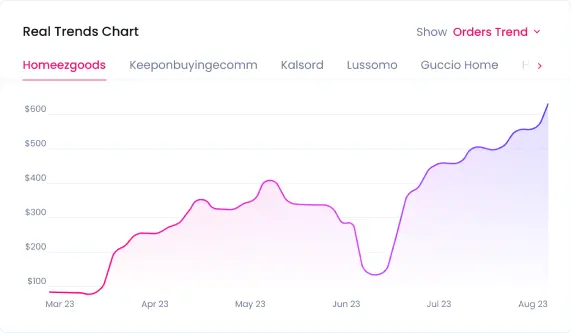Dropshipping for Dummies: The Beginner’s Guide to Dropshipping in 2025
Contents

Dropshipping is simple but not easy.
In this dropshipping for dummies guide, we will cover in detail:
- What drop shipping is
- How the business model works
- Pros and cons
- Step-by-step guide to dropshipping
- Challenges and common mistakes
So, without further ado, let’s dive right into it.
Key Takeaways
- Low Startup Costs and Flexibility: Dropshipping offers a low-risk, low-cost way to start an online business, allowing entrepreneurs to start a business without the need for upfront inventory investment or warehousing..
- Finding Winning Products: Sell The Trend’s AI-powered search and analytics help you identify top-trending products across multiple niches, giving you a competitive edge in a crowded market.
- Supplier Management: Using Sell The Trend, you can easily find reliable suppliers, ensuring timely delivery and quality products, which are crucial for maintaining customer satisfaction.
- Automated Store Setup: Platforms like SellShop.ai, allow you to set up a fully functional dropshipping store quickly, complete with optimized product pages and automated order fulfillment.
- Effective marketing strategies: Marketing strategies such as social media ads and SEO, are essential for driving traffic and sales to a dropshipping store, with platforms like SellShop.ai offering built-in features to streamline this process.
What is Dropshipping?
Dropshipping is a business model where you run an online store without holding any inventory.
The dropshipping model has existed for ages. But with the internet and globalization, the business model has become easier, faster, and more accessible, but also making it more competitive.
In traditional retail models, the seller purchases products in bulk, stores them as physical stock, and then sells them to customers.
In drop shipping, the seller partners directly with the suppliers. These suppliers handle all the inventory management, packaging, and shipping processes. And send the product directly to the customer on behalf of the seller.
How Dropshipping Works
So, how does dropshipping work? Here’s a step-by-step breakdown:
- The Seller (You) Sets Up an Online Store: You create an e-commerce website listing products for sale. These products can be anything. It can range from electronics to clothing, beauty products, or even niche items like specialty tools.
- Customer Places an Order: When potential customers visit your dropshipping store and place an order. They pay the retail price you’ve set for the product.
- You Forward the Order to Your Supplier: Once the order is placed, you forward the customer’s order details to your supplier. You purchase the product from the supplier at a wholesale price.
- The Supplier Ships the Product Directly to the Customer: The supplier handles all the logistics, including packaging and shipping the product directly to the customer. The customer receives the product as if it came directly from your store, with no indication that a third party was involved.
- You Keep the Profit Margin: Your margin is the difference between the retail and wholesale prices (i.e., the price you charge the customer and the price you pay the supplier). Of course, this is just the operating margin; you will also have marketing costs.
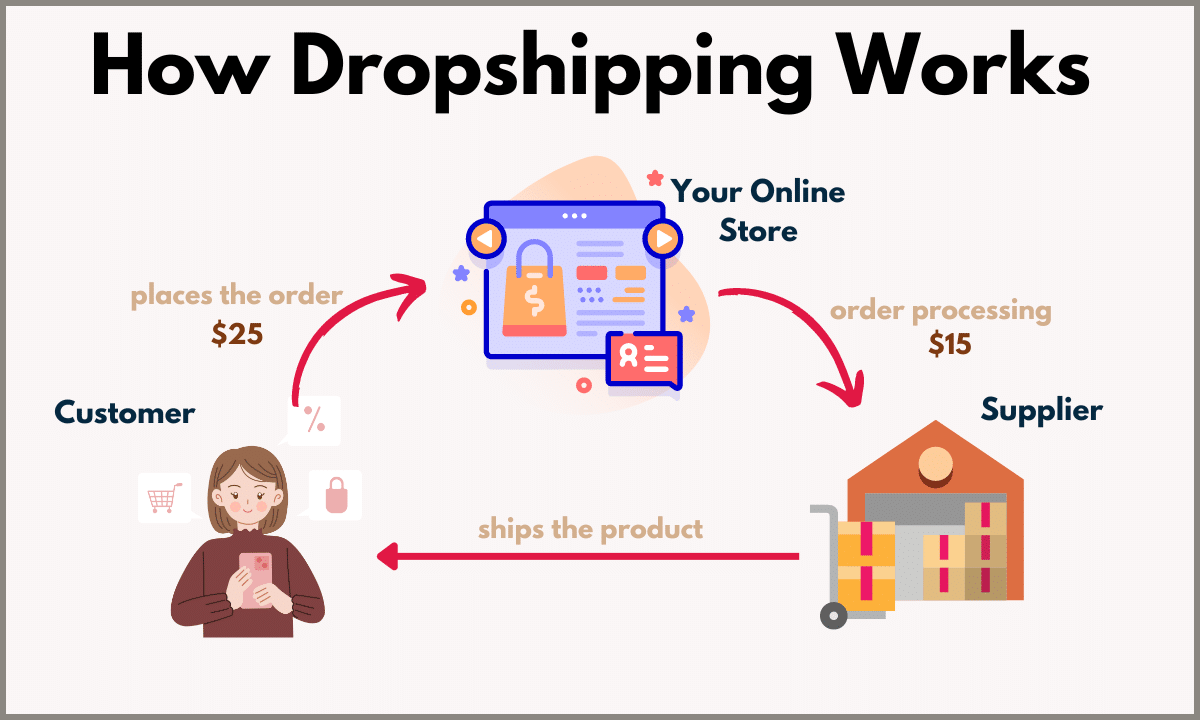
Why Dropshipping is Popular Among Entrepreneurs
The biggest reason dropshipping is popular is because it offers a low-risk, low-cost way to start an online business.
You don’t need too much of an upfront investment. You can launch a store without needing to purchase inventory or manage warehousing. It’s not capital-intensive at all.
Also, dropshipping enables flexibility, allowing you to operate from anywhere with an internet connection. You can also rapidly test products and niches. Stick with it if it works or change it if it doesn’t, making it easier to adapt to market trends.
So, low upfront investment, less risk, no warehousing hassles, and an option to bail out without too many problems – one can easily start dropshipping, right?
Well, it has its pros and cons.
Pros and Cons of Dropshipping
Here are all the pros and cons of dropshopping.
Advantages of Dropshipping
- Low Startup Costs: Since you don’t need to purchase inventory upfront, the initial investment required is almost zero.
- Flexibility and Scalability: Dropshipping allows you to run your business from anywhere and scale quickly. You don’t have location and supply chain constraints. As your business grows, you can easily add more products and multiple suppliers.
- No Inventory Management: You don’t need to worry about storing, managing, or shipping products. Your dropshipping suppliers handle all logistics, reducing your operational responsibilities and overhead.
Disadvantages of Dropshipping
- Low Profit Margins: Dropshipping is ultra-competitive, which often leads to slim profit margins. Many others can sell the same products you are selling. In no time, the margins can reduce and might even make your business unsustainable.
- High Competition: The entry barriers are low. The dropshipping market is saturated with competitors. It can get difficult to stand out and attract customers.
- Supplier Reliability Issues: Your business depends heavily on your suppliers. If a supplier fails to deliver on time or provides poor-quality products, it can lead to customer dissatisfaction. And harm your brand’s reputation.
Step-By-Step Guide to Dropshipping
If you want to start with dropshipping, this is the detailed dropshipping for dummies guide you need.
Let’s start with the first step.
#1. Pick Your Niche
There are multiple ways to approach dropshipping. You can choose to dropship several different categories of multiple products under one shop—a general store. Or you can choose to sell dropshipping products under one niche—a niche store. The last option is to sell only one product—a one-product store.
A niche store is the best. You have multiple dropshipping products to sell, yet they are not too scattered like a general shop.
Now, which niche to pick?
You want to choose a niche that has proven profitability. And yet, is not saturated with competitors.
This is easier said than done. Here are the ways you can do your research to help you find your niche.
(a) Sell The Trend
Sell The Trend helps you to find top-winning products trending across different platforms.
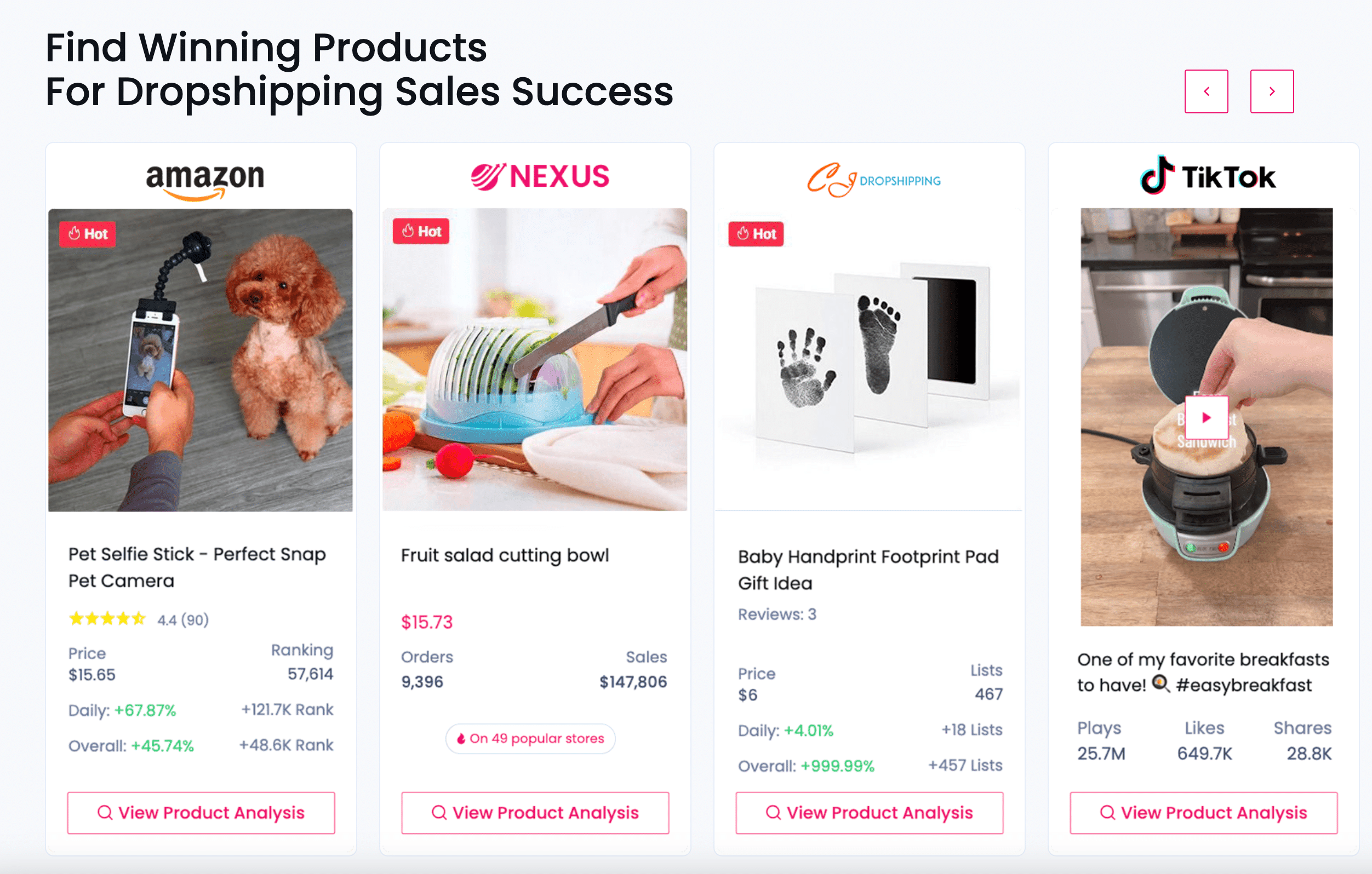
The tool allows you to research different products to find your niche and product offerings. With over seven million products across 83 e-commerce niches, Sell The Trend helps you find product ideas easily with its AI-powered search and analytics.
Check out the Sell The Trend product research tool for free here.
(b) Use Google Trends
Google Trends is a free tool that shows the popularity of search terms over time. Filter the timeline to 5 years. And gauge the interest trend in your potential niche. Make sure the trend is NOT downwards.
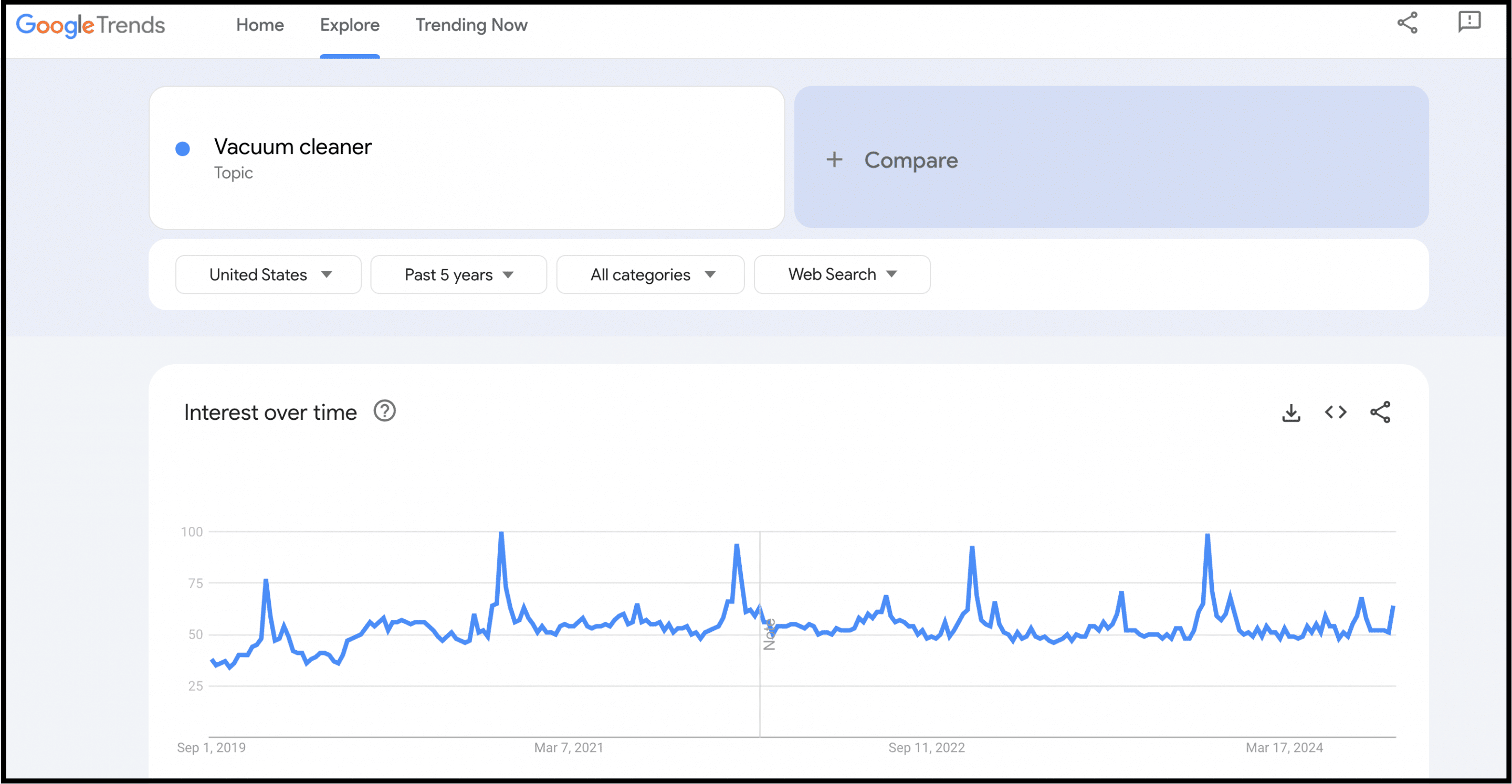
You can also compare niches to see which is more trending.
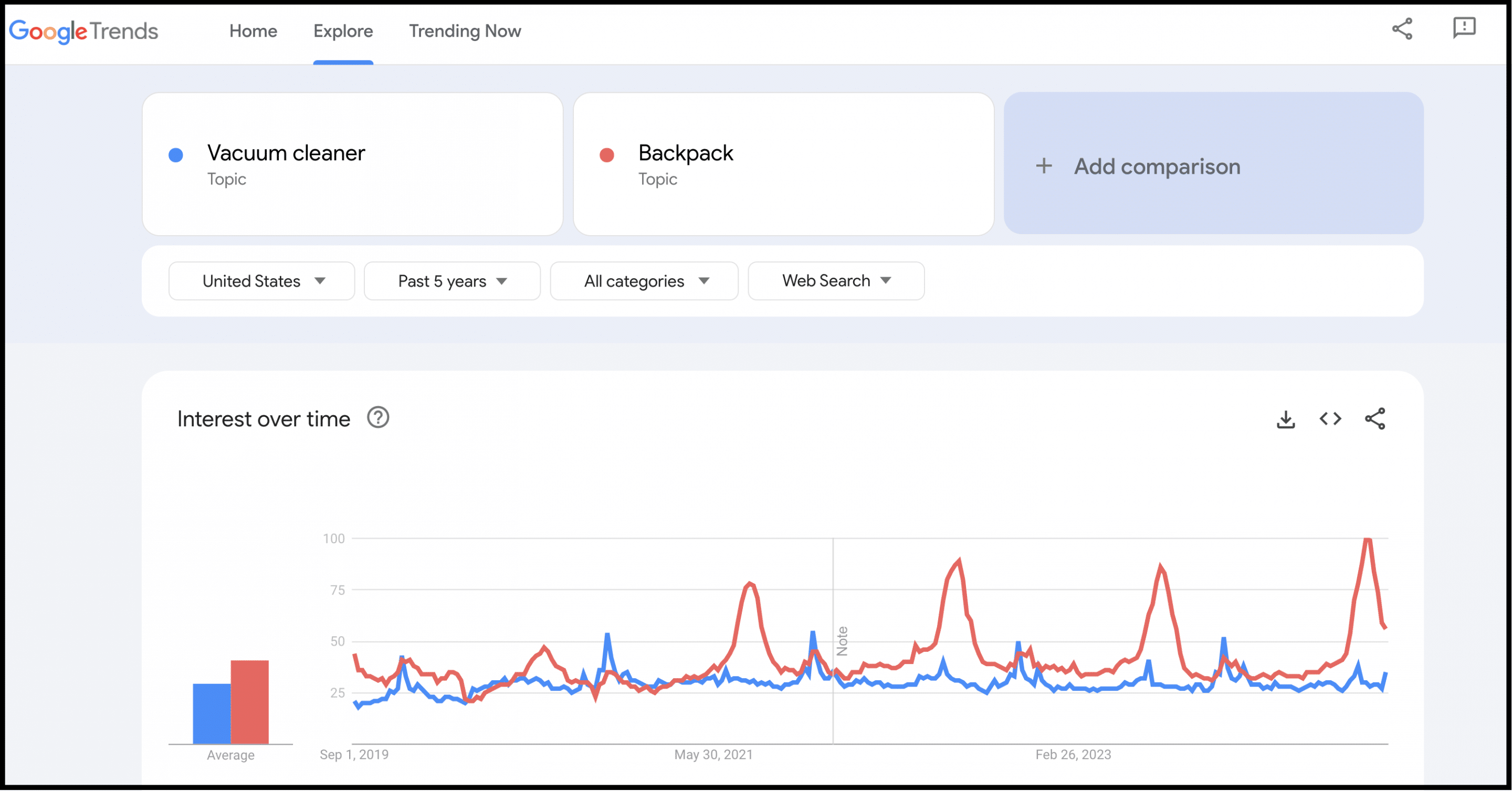
(c) Check online marketplaces like Amazon
Browse and analyze popular e-commerce platforms like Amazon, eBay, and Etsy. They help you to know the best selling products and what products are currently popular.
Take Amazon, for example. You can browse the Amazon Best Sellers list and see what products are popular in each subcategory.
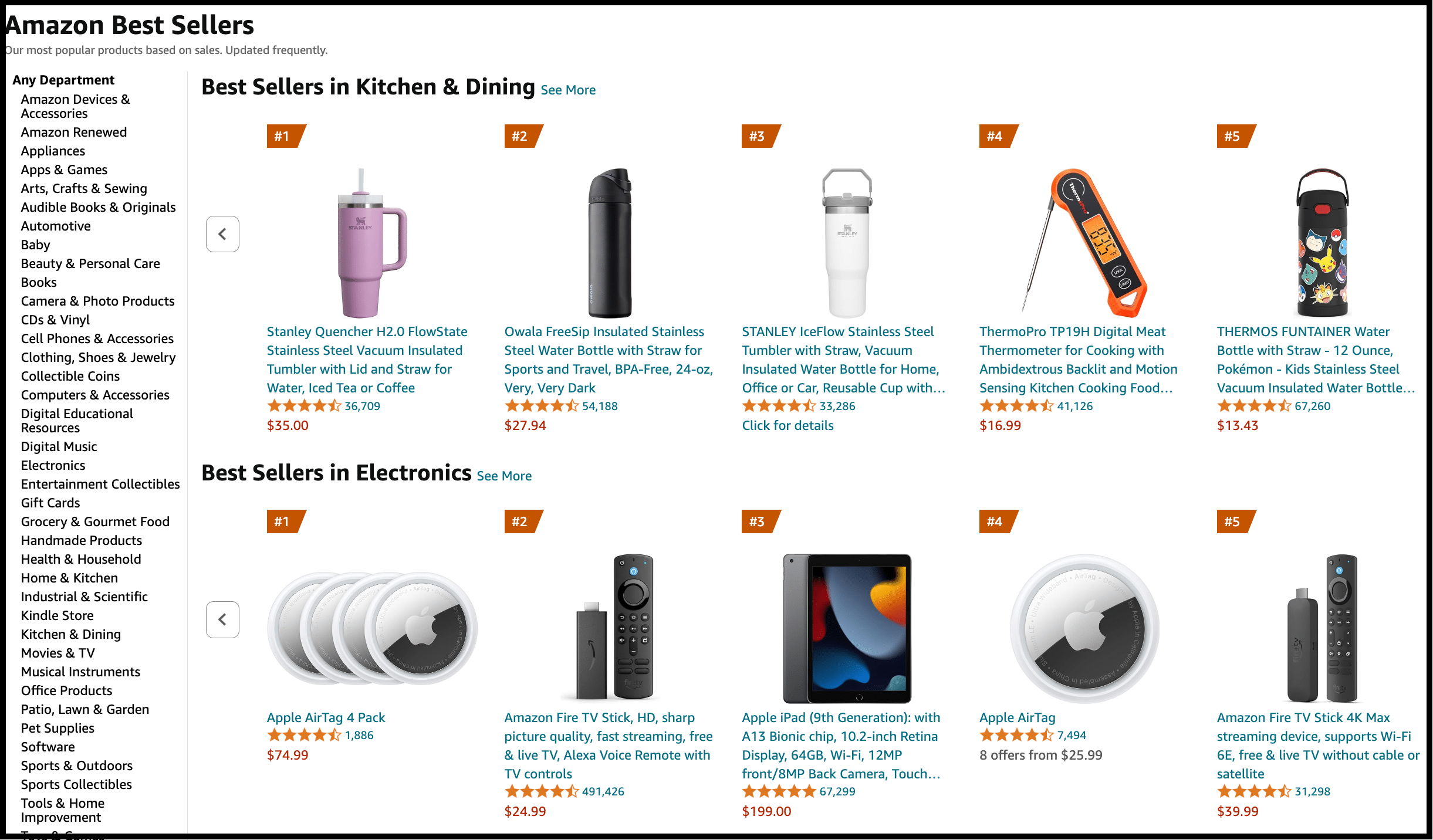
In addition, you can also:
- Use Amazon’s “Customers Also Bought” feature.
- Spot opportunities in the “Frequently Bought Together” section.
- Research Amazon’s “New Releases” and “Movers & Shakers” lists.
- Read customer reviews and understand pain points.
- Identify popular search items via Amazon search autocomplete.
- If you are an Amazon seller, analyze sales data and competitor strategies.
(d) Analyze Meta ads
Social media insights are another approach to narrowing down your niche.
Head to Meta ads library and type in a keyword. You will see all the ads containing that keyword.
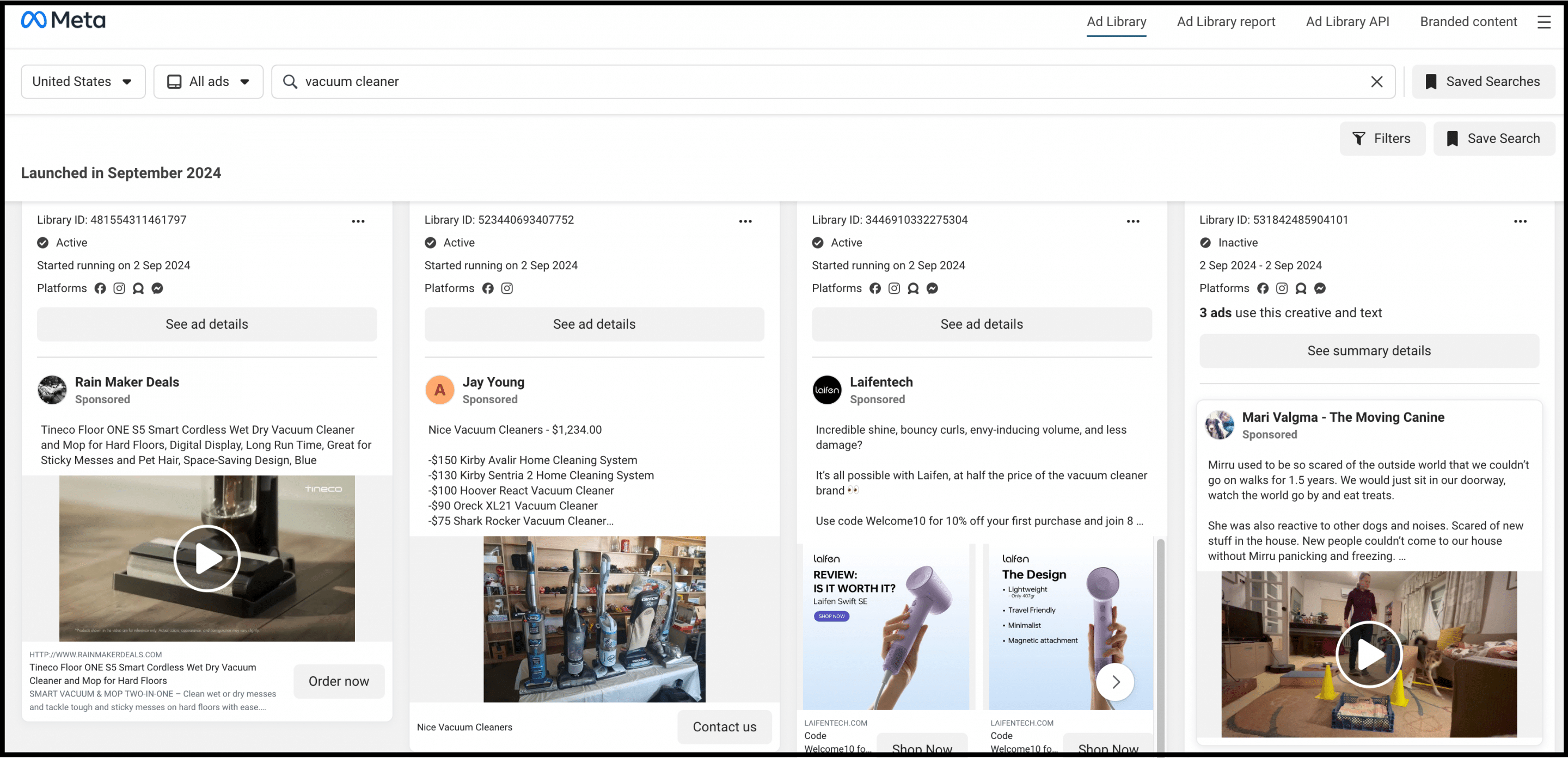
You can click on “See ad details” and “See summary details” to dig deep into the competitor strategies.
(e) Use tools like Ahrefs or Semrush
Once you have shortlisted a few niches or categories, you can refine your niche by checking their traffic and relevant keywords.
Tools like Ahrefs and Semrush come in handy here.
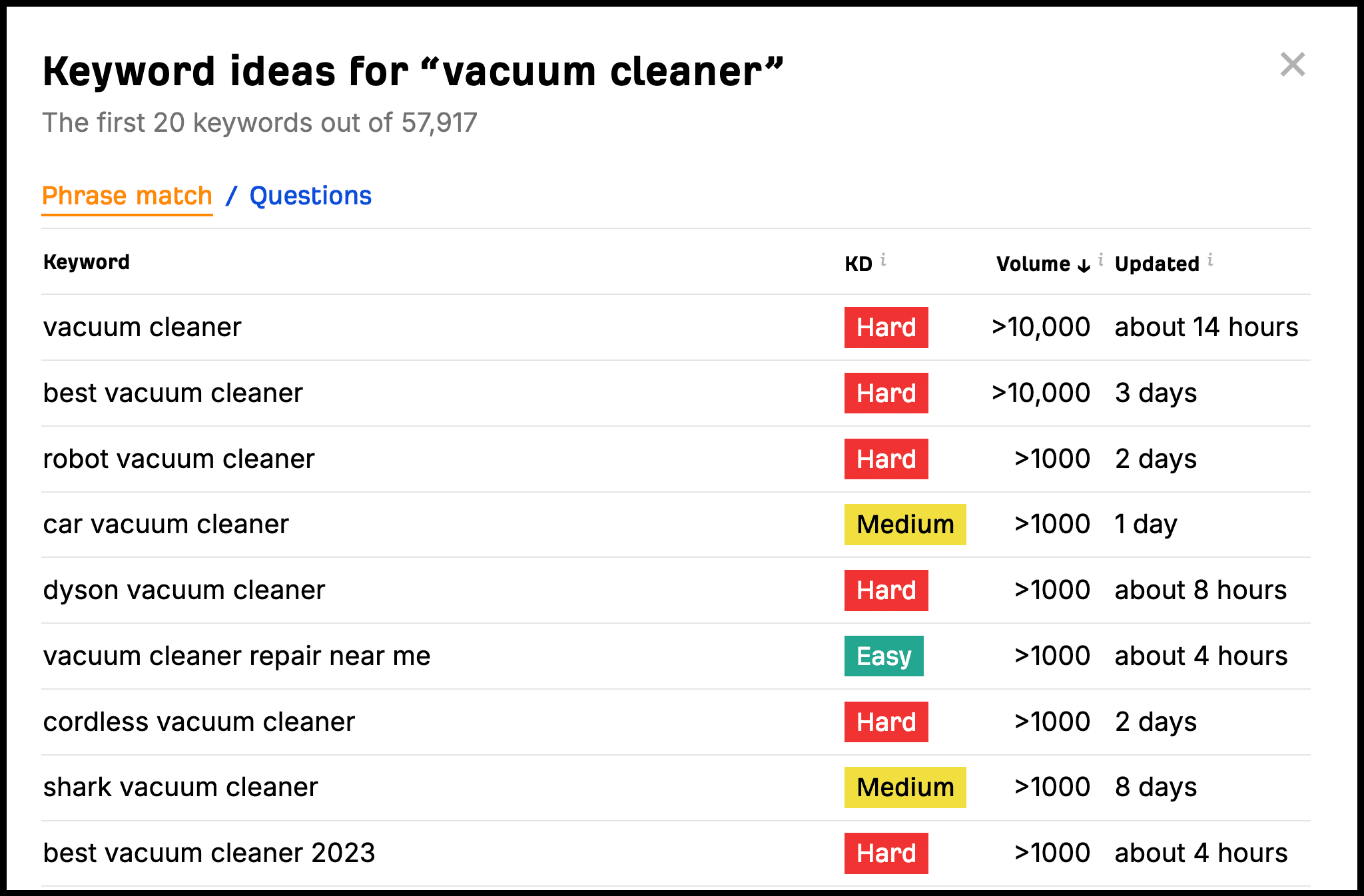
You can analyze different keywords, their traffic, and also how competitive the topic is.
Finalize the niche and the products you want to dropship from these tools and strategies. Once you have done that, we can move to the next step.
#2. Find Reliable Dropshipping Suppliers
A reliable supplier is essential to your dropshipping business. Suppliers are responsible for delivering quality products on time. And their delivery impacts your customer satisfaction.
So before we dive into how to choose suppliers, these are the pre-requisites:
- Use Reputable Platforms: Start by searching for suppliers on established platforms. These platforms vet suppliers and provide reviews from other drop-shippers.
- Check Supplier Reviews: Always review supplier feedback and ratings. Look for suppliers with lots of positive reviews, fast shipping times, and a reliable track record.
- Test Order Samples: Before committing to a supplier, order samples of their products. Evaluate the quality, packaging, and shipping speed.
Next, while there are many platforms and dropshipping directories to choose your supplier from, here are the top ones:
- Sell The Trend
- DSers-AliExpress Dropshipping
- CJ Dropshipping
- Wholesale2B
- SaleHoo
- Modalyst
- Dropified
You can also find suppliers directly from an e-commerce platform like AliExpress.
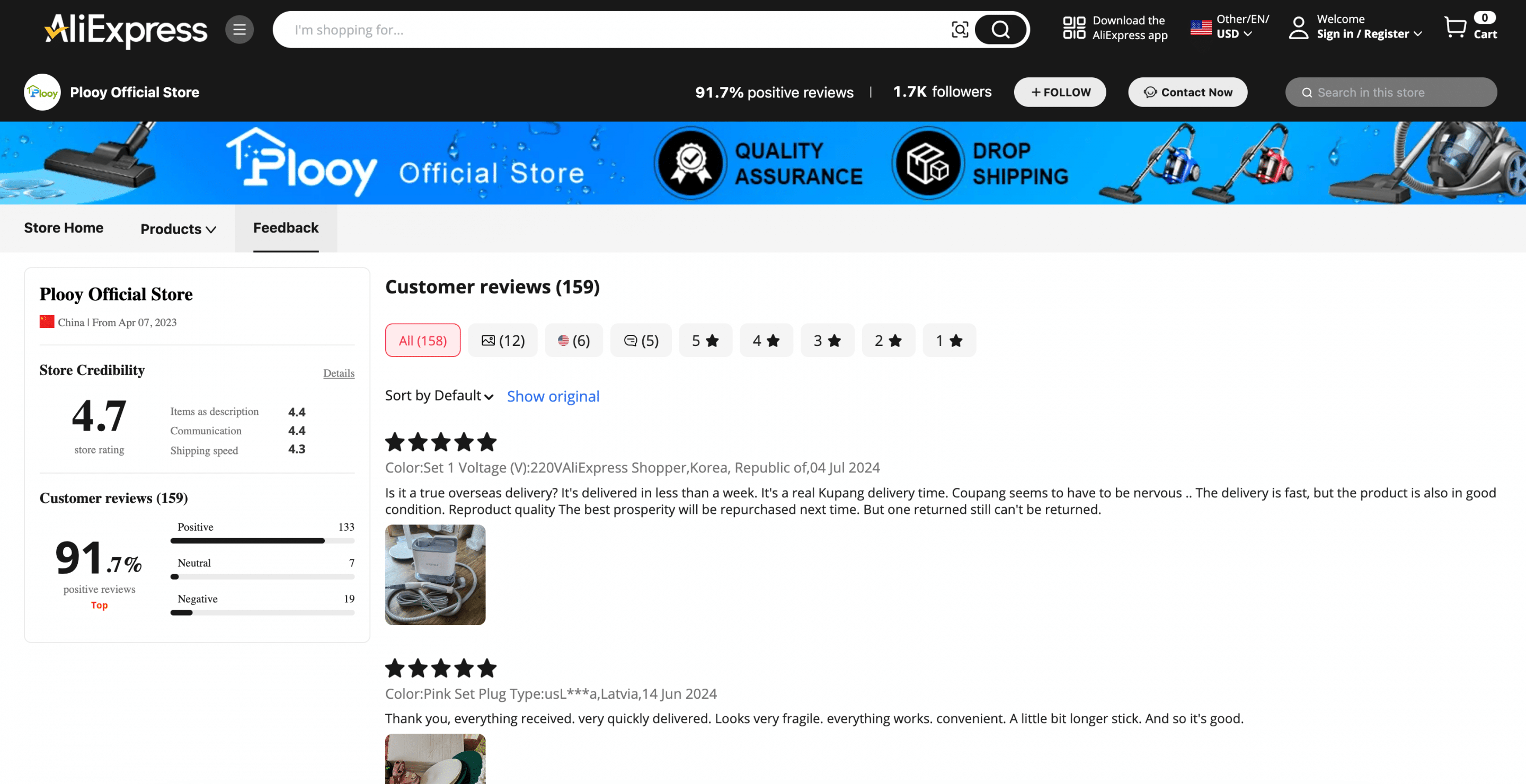
Irrespective of which platform you choose to find dropshipping suppliers, make sure they are good. Their shipping times should be low, have top-notch product quality, and maintain smooth communication.
#3. Set Up Your Online Store
Once you have the niche, products, and supplier(s) ready, it’s time to set up your dropshipping store.
You need to select the right e-commerce platform. Here are the top ones.
SellShop.ai
With SellShop.ai, you can launch your online store instantly with minimal setup required.
SellShop provides product pages that not only look great, but are also optimized for sales with engaging descriptions, customer reviews, and built-in upsell features. It also comes with automated order fulfillment, a supply directory, multiple design templates, and easy-to-use analytics. You can also create a complete store including products in any niche you choose with one click.
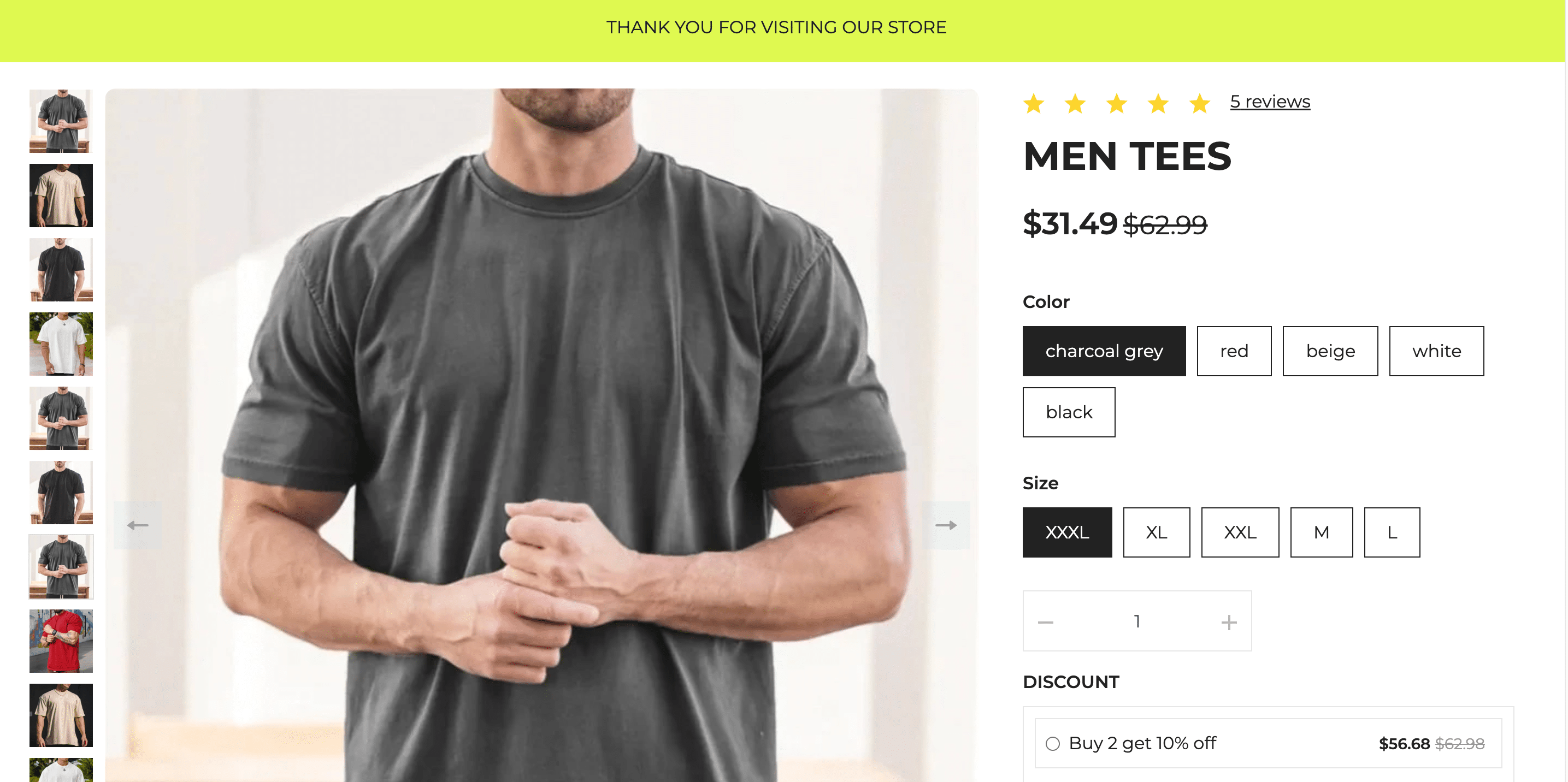
It’s a full-fledged platform built specifically for dropshipping. And you don’t need any technical expertise for setup!
Check out SellShop.ai for a 14-day free trial here.
Shopify
Shopify is a user-friendly platform ideal for beginners, though it might require some knowledge to get things going with setting up a shopify store.
Setting up dropshipping stores with Shopify is easy. You can signup and the platform guides you to the steps to create a store.
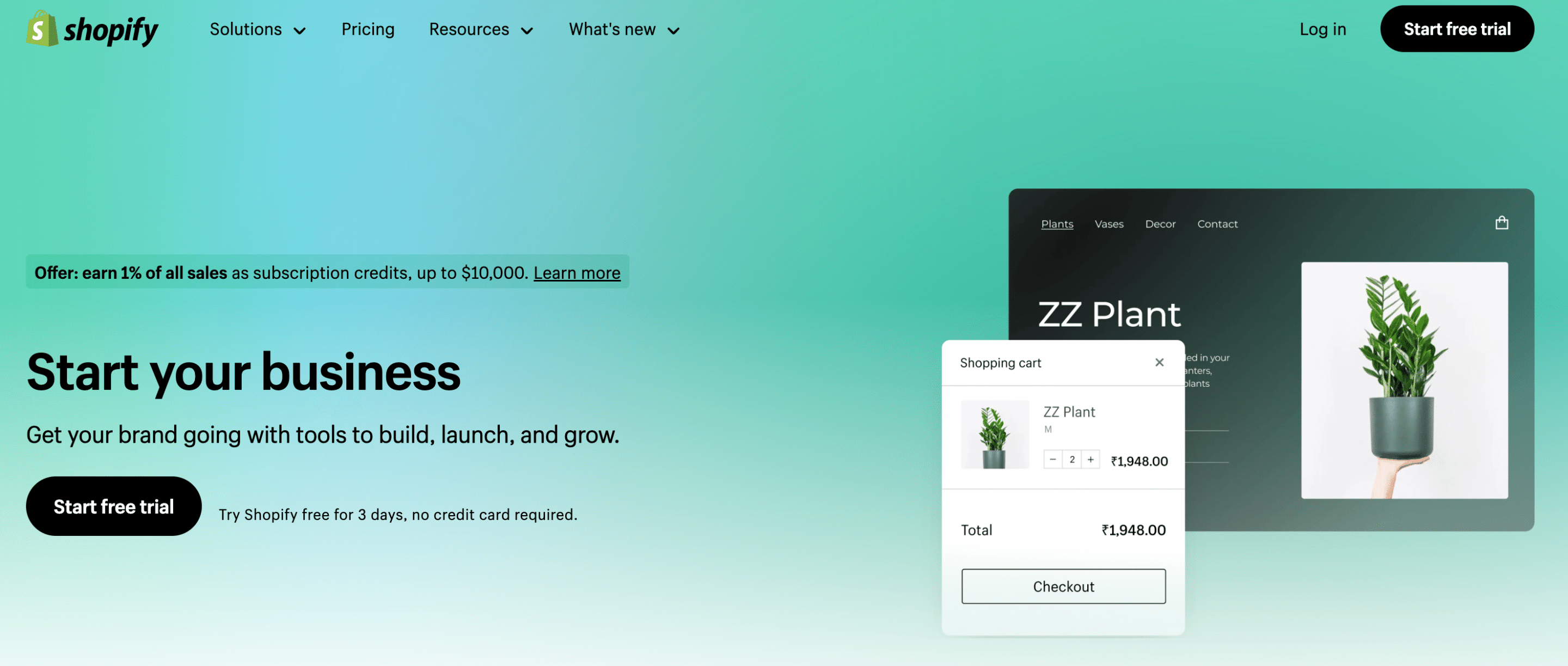
Shopify also offers a wide range of apps, including apps for various functions, for easy product importing. It also has a fully hosted solution. Meaning you don’t need to worry about technical aspects like hosting or security.
WooCommerce
WooCommerce is a WordPress plugin that offers more customization options. To set up an online store, you first need a WordPress site and then have to install the WooCommerce plugin.
WooCommerce works the best if you want full control over your dropshipping store design and layout. While it is more flexible, you need some technical knowledge to set up and manage WooCommerce.
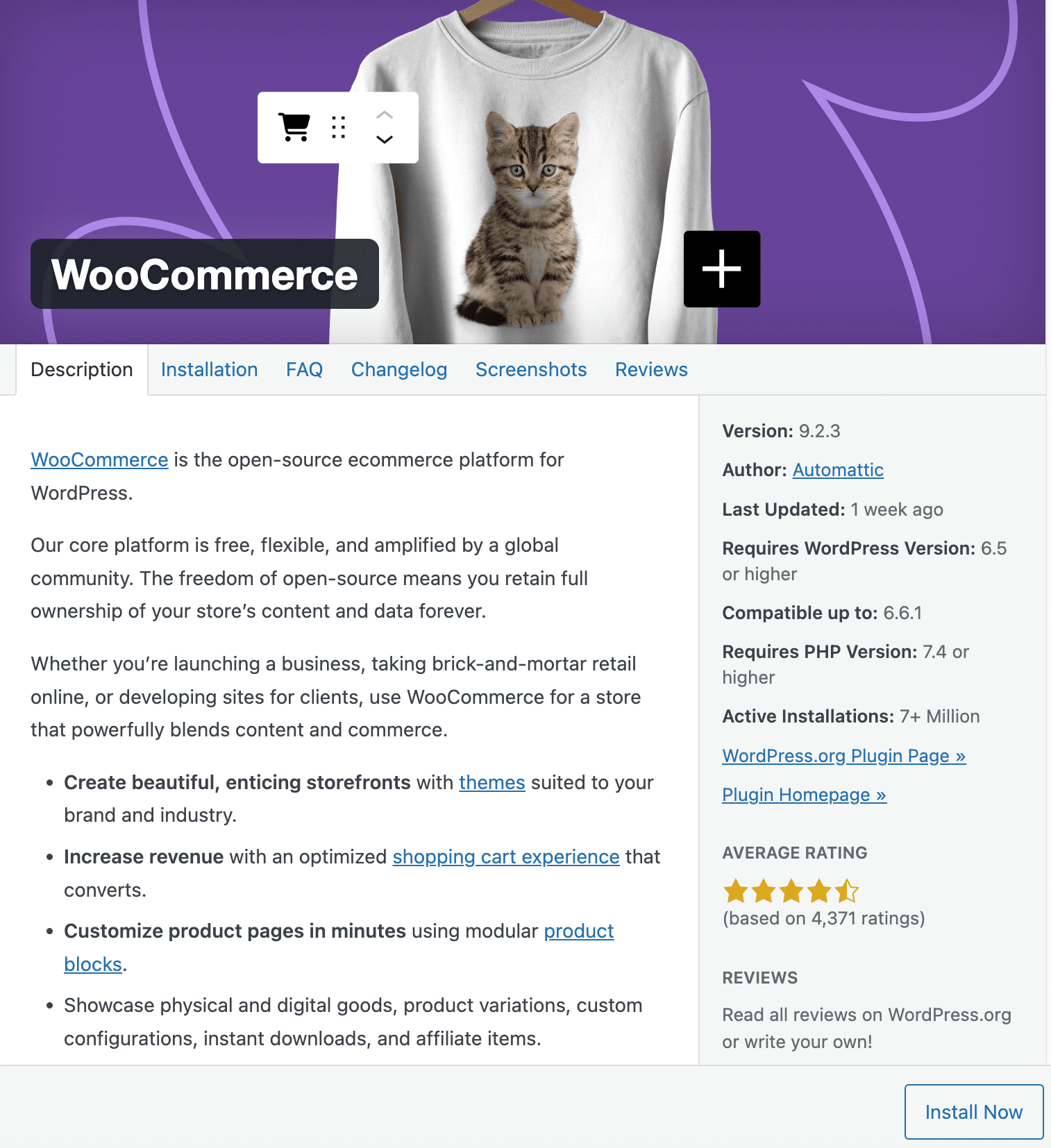
BigCommerce
BigCommerce is another hosted platform similar to Shopify, but with more built-in features.
It’s scalable and can handle larger catalogs and higher traffic. BigCommerce is a good choice for growing businesses that need a lot of features without relying heavily on third-party apps.
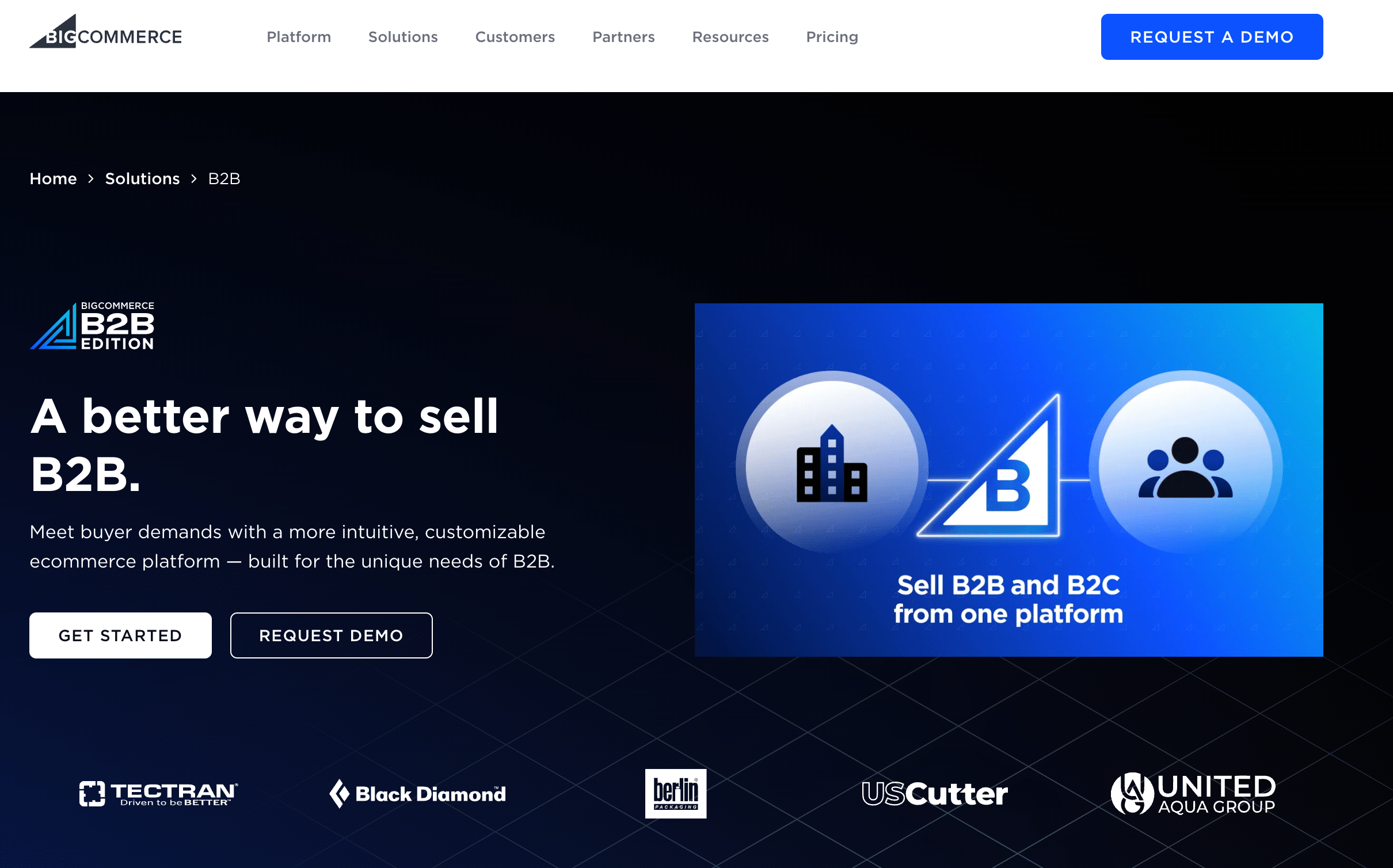
Once you have set up your store, it’s time to optimize for the consumer journey. You want to convert the user on your site.
While the subject in itself is vast, and since it is a dropshipping for dummies guide, here’s what to focus on as a beginner:
- User Experience (UX): A well-designed user experience is a must. A clean, intuitive layout, fast loading times, good color scheme, clear CTAs, easy navigation, and easier checkout. These are all essential for a positive UX.
- Key Features: Key features include things that must be in dropshipping stores. A search bar, clear product categories, customer reviews, and a streamlined checkout process. These features help build trust and make it easier for customer purchases.
- Mobile Optimization: Optimize your store for mobile devices. A significant portion of online shopping is done on mobile devices. A responsive design that adapts to different screen sizes is essential today.
- Product Description Copywriting: Write quality product descriptions. Highlight the benefits of your products. Add quality images and videos. Reiterate and improve your copy.
- Payment Processing: Set up a proper payment and checkout process. Make sure the site has an SSL certificate. The user should be able to check out the product and pay for it without any hassles.
#4. Market Your Dropshipping Business
Marketing your online business is the most crucial step in getting consumers onboard. Here are tips and approaches you can follow for your dropshipping business.
Build Your Brand Identity
Building a brand takes time. But for now, start with a brand identity. This includes your brand name and logo.
For now, start with the brand name and logo. You can hire freelancers from Upwork and Fiverr to create a logo for you. Make sure the logo is simple, looks great, and is clearly visible across different platforms.
Social Media Marketing
Most of the target audience is on social media platforms nowadays. You can funnel them to your online store through two methods.
First, use platforms like Instagram, Facebook, and TikTok to organically reach your potential customers. Use Instagram for visual storytelling with reels and posts. Facebook for detailed posts, groups, and pages. And TikTok for viral short-form videos. Each platform can help build awareness and reach your customer.
Second, run paid social media ads. Social media ads are highly targeted and can quickly generate traffic and sales. Especially Facebook ads. Focus on creating compelling visuals and concise copy. Use the targeting options to reach specific demographics.
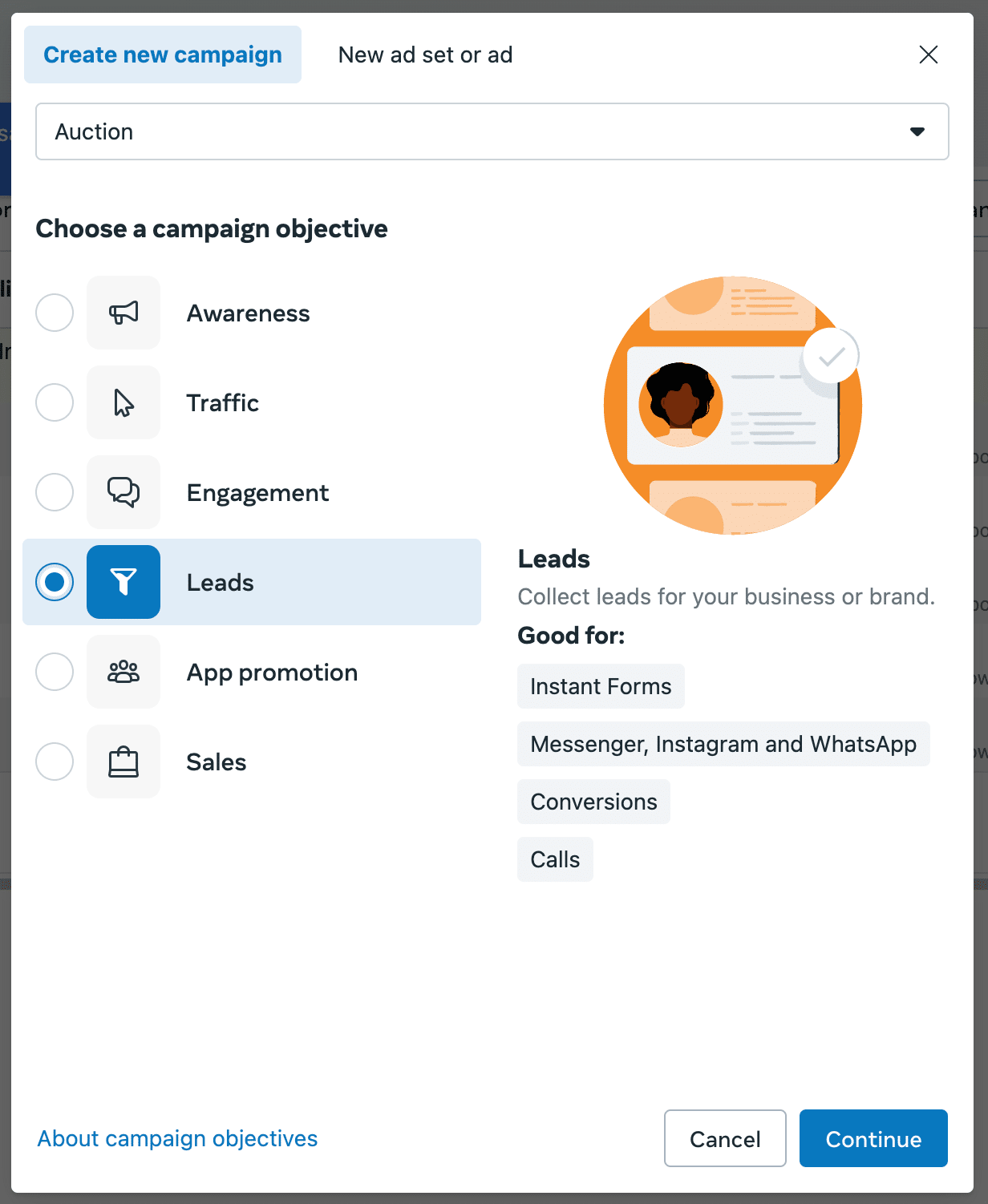
SEO
Content marketing and SEO (Search Engine Optimization) is another approach to building brand authority and driving traffic to your store.
Optimize your pages for search engines. Publish blog posts on topics that are relevant to your niche. Answer niche-specific questions, in-depth guides, cover industry updates, and detail out how-to guides.
When done right, the content ranks high on search engines and brings organic traffic to your dropshipping store. Once they land on the store, you should have clear CTAs and have the page optimized for easy online purchases.
Influencer Marketing
Influencer marketing is leveraging influencers’ reach and credibility to promote your products.
Find the influencers who align with your brand values and target audience. Shortlist them. Then, filter for influencers with high engagement rates and authenticity. Do not just go for large followings.
Follower count is a vanity metric. Don’t focus too much on it. Oftentimes, micro-influencers with small following but focused audiences are a better deal. They offer a higher ROI than larger influencers.
Email Marketing
Email marketing is one of the most effective ways to engage with your audience and drive and increase sales.
Use opt-in forms on your website and social media to capture emails. Offer incentives like discounts or exclusive content as lead magnets to encourage sign-ups.
Once you have a sizeable list, create personalized email campaigns. The emails should provide value to your subscribers. These could include welcome emails, product recommendations, special offers, and abandoned cart reminders. You can also throw in educational content to warm up your audience. Focus on compelling subject lines and clear calls to action to maximize open rates and conversions.
#5. Manage Your Dropshipping Business
Once you have revenue pouring in, it’s time to double down on what works and keep the machine running.
Here are some pointers for you to manage and scale your dropshipping business.
- Use tools to automate: Use tools like Sell The Trend for easier order fulfillment. You can forward the customer orders directly to suppliers and track your shipments. Also makes the entire process hassle-free.
- Manage returns: Develop a clear returns policy. And make it easily accessible to customers. Manage the returns by coordinating with your dropshipping suppliers. For returns, you need to bear the shipping costs.
- Avoid stockouts: Monitor supplier inventory levels and sales trends. Make sure the supplier can fulfill the customer orders timely.
- Add products to the store: Once you are seeing good profits, consider expanding the product line. Add complementary products. They should go along with your existing ones.
- Set up proper accounting: Implement accounting software to track your finances. Apps like QuickBooks or Xero track your income, expenses, and profits.
- Get ahead with the tax: Once you are seeing good revenue, consult with a tax professional. Helps you to ensure compliance and optimize your tax strategy.
Common Mistakes to Avoid in Dropshipping
Here are some common dropshipping mistakes to watch out for:
Choosing the Wrong Niche
Selecting a niche without proper market research can lead to low demand and poor sales.
Popular niches are good. But they can also get oversaturated. On the other end, boring, unheard niches have little to no competition. But there is low demand as well. So, you need to find that balance. Make sure your chosen niche has a strong, sustainable demand and isn’t oversaturated with competitors.
Also, avoid picking a niche solely based on your personal interests. While passion is important, the niche must also be profitable and align with market trends.
Ignoring Customer Service
Neglecting customer inquiries or providing slow responses can damage your reputation. Prompt and clear communication is extremely important for building trust and customer satisfaction.
So, always prioritize resolving customer concerns. And provide excellent customer service.
Failing to address customer issues, such as returns or product defects, can lead to negative reviews. You can end up with lost business.
Over-reliance on a Single Supplier
Depending on a single supplier makes your online business vulnerable. Espeically if your dropshipping supplier fails to deliver, runs out of stock, or raises prices. Always have multiple suppliers.
Also, when you rely on one supplier, any drop in product quality can directly impact your business. You constantly need to check the product quality and the supplier’s performance. So, diversify your dropshipping supplier base and reduce single-party risk.
Failing to Adapt to Market Changes
The e-commerce market is constantly changing. There are always new trends, new technologies, and changing customer preferences. So you need to to adapt your product offerings and marketing strategy regularly.
While predicting your target market trends is tough, you can always analyze the current data you have. Use data to understand your store’s performance, customer behavior, sales trends, and market dynamics. Regularly analyze and act on data insights to stay competitive.
FAQ
How do you dropship for beginners?
Choose a profitable niche that’s not overcrowded with competitors. Set up an online store using a platform like Shopify. Find reliable suppliers. Market your products through social media and content marketing. Fulfill orders. And constantly improve your processes.
Is $100 enough to start dropshipping?
Yes, $100 can be enough to start a basic dropshipping business. You can use a budget-friendly platform like Shopify. Find low-cost or free marketing efforts. Pick products with minimal upfront costs. But, scaling your business might require additional investment.
Is $500 enough to start dropshipping?
With $500, you can easily start a dropshipping business. It covers essential costs like setting up your store, purchasing a domain, running initial ads, and testing products. A $500 budget allows you to spend on marketing strategy and product selection. But again, for scaling up, you might need more funds.
Is dropshipping worth it for beginners?
Yes, dropshipping is worth it for beginners because it requires a low upfront investment. There is also less risk with no inventory required. However, success depends on lots of factors. From choosing the right niche to marketing to managing supplier relationships.
Conclusion
dropshipping offers an accessible and low-risk way to enter the world of e-commerce, making it an ideal business model for beginners. While it does come with its challenges, such as supplier reliability and competitive markets, the potential for growth and flexibility is unmatched. By carefully selecting a profitable niche, finding reliable suppliers, and using tools like Sell The Trend and SellShop to streamline product research and store management, you can build a successful dropshipping business that scales. With the right strategies in place, you’ll be well-equipped to navigate the dynamic world of dropshipping and turn your online store into a thriving venture.




